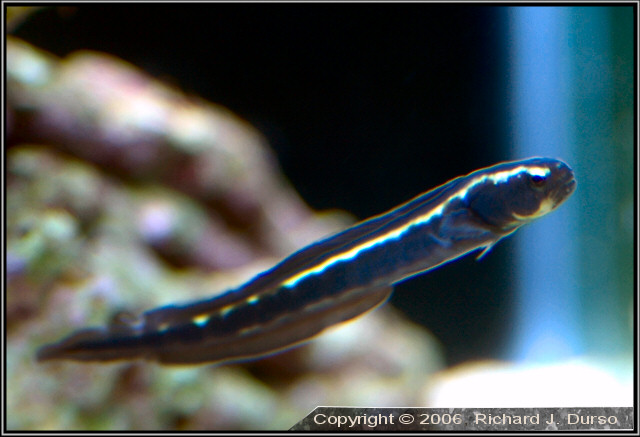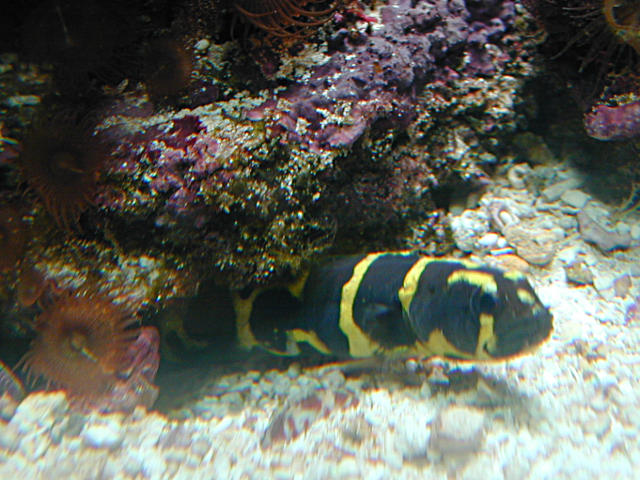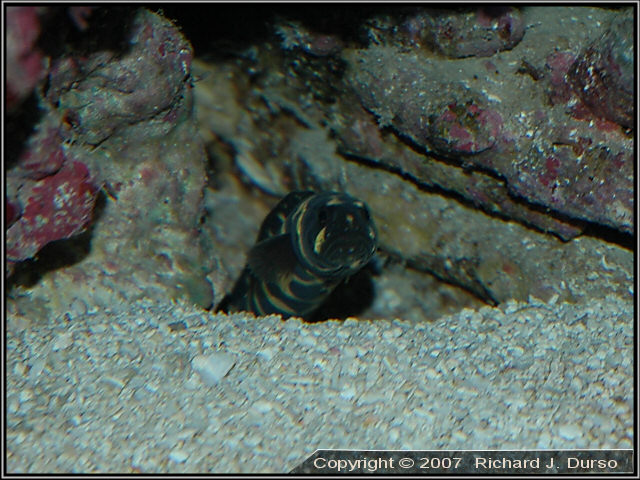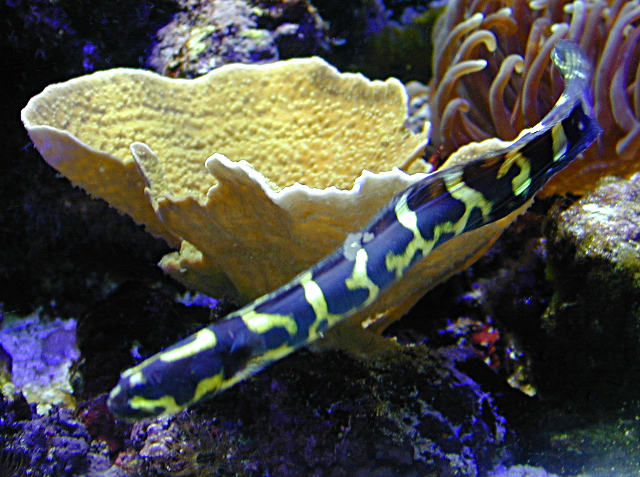
Engineer Gobie - Pholidichthys leucotaenia
Picture taken June 2006, Nikon D70 Digital SLR, Nikkor 18-70mm DX lens In one of my past tanks I had an Engineer gobie and it was one of my wife's favorite fish. This fish is also known as the Convict Blenny and sometimes called the "poor aquarist's moray" due to the pattern of light and dark stripe on a black background. This one pictured is a juvenile that is starting to get its adult vertical stripes. They do not stay small forever, adults given enough time will reach 16 to 20 inches and be as thick as your thumb. In my years of keeping them this has never happened. The largest I have seen one get is 8 to 10 inches and a little thicker than a fat pen or a marker. It is a neat eel like fish which swims with an undulating movement of the dorsal and anal fins. The anal fin goes all the way down to the tail. This is also one of the few fish that can even swim backwards. It is easy to feed and not very aggressive. I have two of them in the tank this time. They typically remain careful and cautious preferring not to leave the cave they have constructed. Their classification is still unresolved as it is not clear if this fish is a goby or a blenny or possibly in its own family. Propagation of this species in captivity has been done many times with one of the first documented being in 1988. It is a mouth brooder which shows parental care for several weeks. The eggs take 15 to 19 days to develop, larval development lasts 19 to 22 days after which it is a juvenile for 6 to 7 months finally getting its adult coloration around 9 months. This species has been know to live as long as 17 years. Reference: Prof. E. Thaler, Propagating Convict Blennies in the Aquarium. 2006. CORAL, 3:6, 80-82. |

Engineer Gobie - Pholidichthys leucotaenia
Picture taken September 2001, Nikon Coolpix 950 Digital Camera, No Flash One thing to keep in mind is that it is called an Engineer for a reason. It digs tunnels under the rock work and moves significant volumes of sand around the tank. You must have a stable rock structure to keep this fish. Typically this fish hides during the day. I only see him in the night hours when he expects to be fed. I also see this fish swimming in the water column at night back and forth. He is hunting for something, I'm not sure what it is. |

Engineer Gobie - Pholidichthys leucotaenia
Picture taken April 2006, Nikon D70 Digital SLR, Nikkor 18-70mm DX lens Both gobies have been doing very well. While they do not directly interact with each other they do tolerate each other very well. No aggression has been detected between them. The smaller of the two is pictured here with its adult coloration. |

Engineer Gobie - Pholidichthys leucotaenia
Picture taken September 2001, Nikon Coolpix 950 Digital Camera, No Flash I was lucky to get this shot, it might look blurry but its one of the clearest full body shots I've been able to get. He is a fast little fish when swimming in open water. I'd guess this one is between 6 and 7 inches long. |
